|
by Dawn Szelc of Clear Blue Landscapes 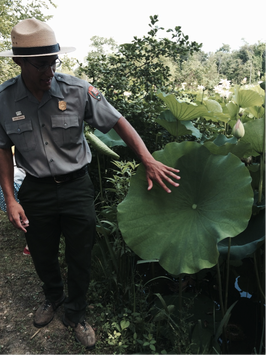 On July 25 the Landscapes Designer’s Group was treated to a tour of the Kenilworth Aquatic Gardens. Our tour guide was Park Ranger John Molineaux. John explained that the ponds were all manmade by Walter Shaw, a Civil War veteran. Walter purchased the property from in-laws and who had established the ponds for the sale of ice. He would travel back to Vermont and bring back the water lilies that he loved. He would plant them in the ponds. He began planting Asian lotus flowers, which also interested him. The water lilies and lotus flowers eventually became the focus of the Park and his daughter, Helen, helped him manage Shaw Gardens. There are now many invasives in the park that are constantly being removed such as porcelain berry and purple loosestrife. Also yellow flag Iris from Asia. There are multiple ponds that host lotus plants where the plants grow up from roots as well as reseeding from pods. In the fall and winter there is a lot of leaf litter. It is cut back to make the ponds look better during the growing season. Volunteers help clear the leaf litter and old stems. Apparently, all parts of the plant can be eaten – stems, leaves, and pods and some discussion of how to cook them went on among LDG members. Someone also told me that she had eaten sautéed lotus pods at a restaurant in DC. There are many native plants growing in the area as well – New York Ironweed, Common button bush, and white Hibiscus or Marsh Mallow used to make the first marshmallows which were used as a cough remedy. Touch-me-not or jewel weed can be used as a remedy for bee stings, and there were also Cattails and Pickerelweed. John explained that the green cattails can be boiled and then has a texture like crab. He was not sure whether they tasted like crab however! There are separate ponds for growing the hardy water lilies. The light pink cultivar there is called “Walter Shaw” and the hot pink cultivar is called “Opal”. The ponds also host a number of animals including muskrat and snakehead fish. Both are problematic species and the park rangers will catch them when they can and kill them. When questioned about some of the other plants that were growing John pointed out some wild rice as well as water hemlock which looks very much like Queen Anne’s lace. He pointed out that the water hemlock had red joints in the stem areas and so were identifiable from the less toxic plant. In Googling the plant I found that water hemlock is the most poisonous plant in North America!
As we rounded the back side of the park our guide, John, explained that the dying trees were probably Ash trees that had succumbed to the Emerald Ash Borer. They were waiting for all the trees to die so that the borer would no longer be present, before they replaced the trees. He also talked about the tidal marshland there that was being drained to control malaria in the time when Helen Shaw had taken over the park, around 1912. She was concerned about the wetlands so petitioned Congress to make the area a National Park, which did occur. Near the back of the park there was also a pond with the giant Amazonia or Victoria water lilies which bloom mainly at night. Victoria amazonica is native to the shallow waters of the Amazon River basin. The large pads are quite delicate but can apparently hold a large amount of weight if it is distributed across the leaf pad using something like a sheet of plywood. The underside of the leaves have many spikes. Since these are not hardy in our climate, they must be replanted each year. There is an interesting video on Youtube that talks about how it blooms and is pollinated https://www.youtube.com/watch?v=WPR8kxTyG9Q The tour ended with a trip through the gift shop and a small display of some of the history of the property.
0 Comments
Leave a Reply. |
AuthorsLDG is a non-profit corporation dedicated to the exchange and enhancement of knowledge relevant to the landscape design profession. We are a group of professional designers in the metropolitan Washington, DC area. Membership is meant for students studying and professionals employed in landscape design or associated professions (i.e. arborists, installers, contractors, etc.). Archives
October 2023
CategoriesPast Newsletters can be found in the Members Only Section of the LDG Membership Connection. You must sign in to view these files.
Past Newsletters |
|
Search for a Landscape Designer in Your Area:
|
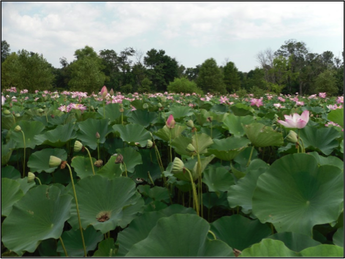
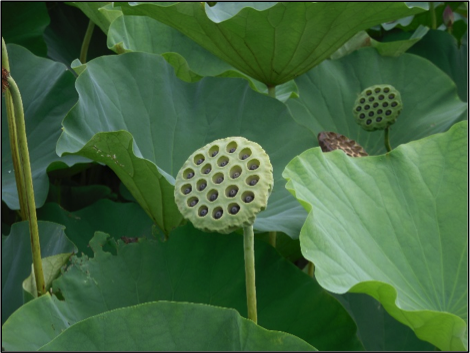
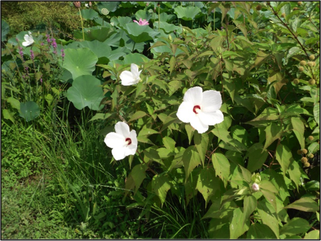
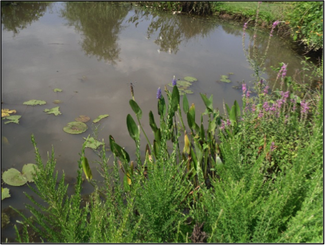
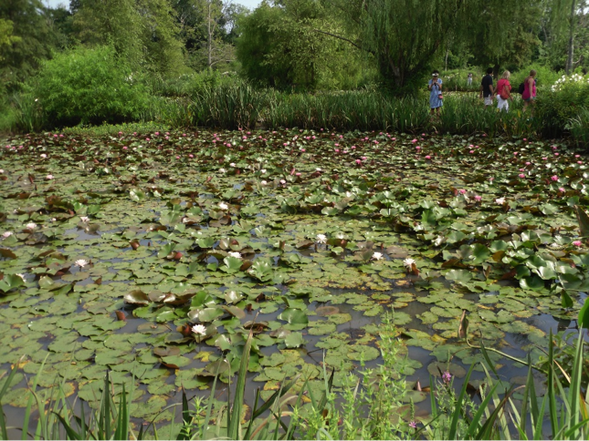
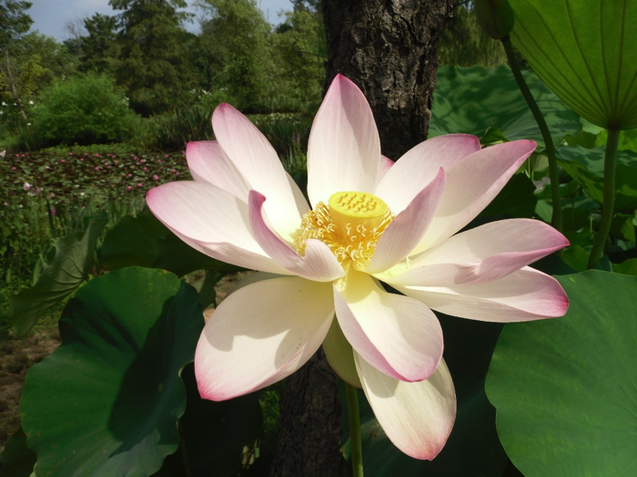
 RSS Feed
RSS Feed
